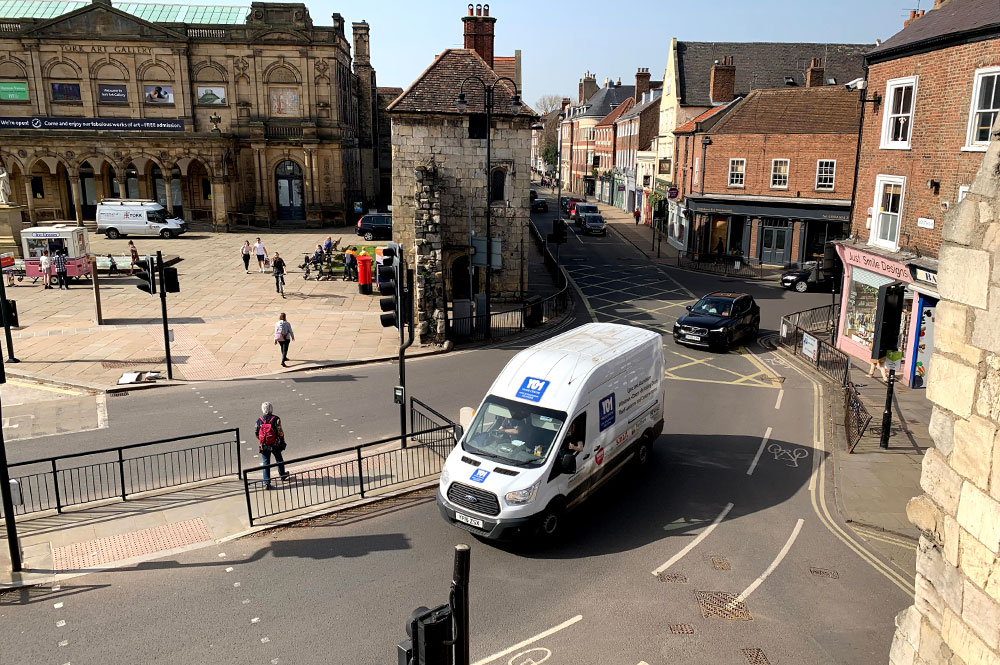The junction at Bootham Bar is not now going to be reorganised to make more space for pedestrians.
City of York Council revealed two designs for the junction between Bootham, Gillygate and St Leonard’s Place in the city centre and invited residents to have their say.
- Option A was to upgrade the traffic lights and widen the crossings.
- Option B would have also seen a lane of traffic removed in St Leonard’s Place at York Art Gallery and an extra pedestrian crossing created – but the council warned it would cause traffic delays.

Option A 
Option B
Transport bosses have now recommended that option A goes ahead and have asked Cllr Andy D’Agorne to approve this at a meeting next week.
Council officers say that option B would improve road safety, cut waiting times for pedestrians and boost the area around the art gallery.
But it could increase journey times for drivers and buses by up to 90% at rush hour and is £300,000 more expensive than option A.
They add that air quality could become worse as a result of the changes in option B, but that option A is unlikely to cause more pollution.
Tripping the lights

They say upgrading the traffic lights is the priority because “on very warm days the signal controller cabinet is sat in direct sunlight leading to overheating which trips the entire signal system on one of the inner ring roads most critical junctions”.
The council’s consultation received more than 1,200 responses – with 47.61% of people in favour of option A, 33.52% in support of option B and 18.67% supporting neither.
But there was an investigation after 216 responses were found to be submitted from the same IP address – the unique code for each computer or IT device.
These were not excluded from the survey. But 382 responses were excluded because the person had not completed all of the questions.
The report says in the past three years there were five collisions at the junction resulting in seven injuries – five to cyclists, one to a pedestrian and one to a car passenger.
It says the layout of the junction could be changed in the future. Option A is set to cost £200,000 – compared to £500,000 for option B. The plans are set to be discussed at a transport meeting next Wednesday.
